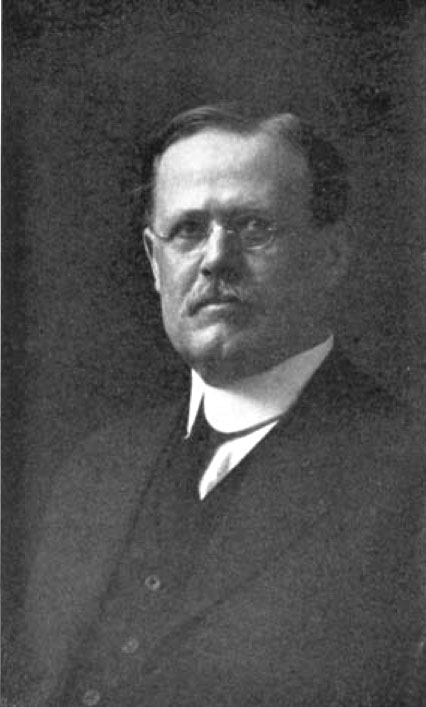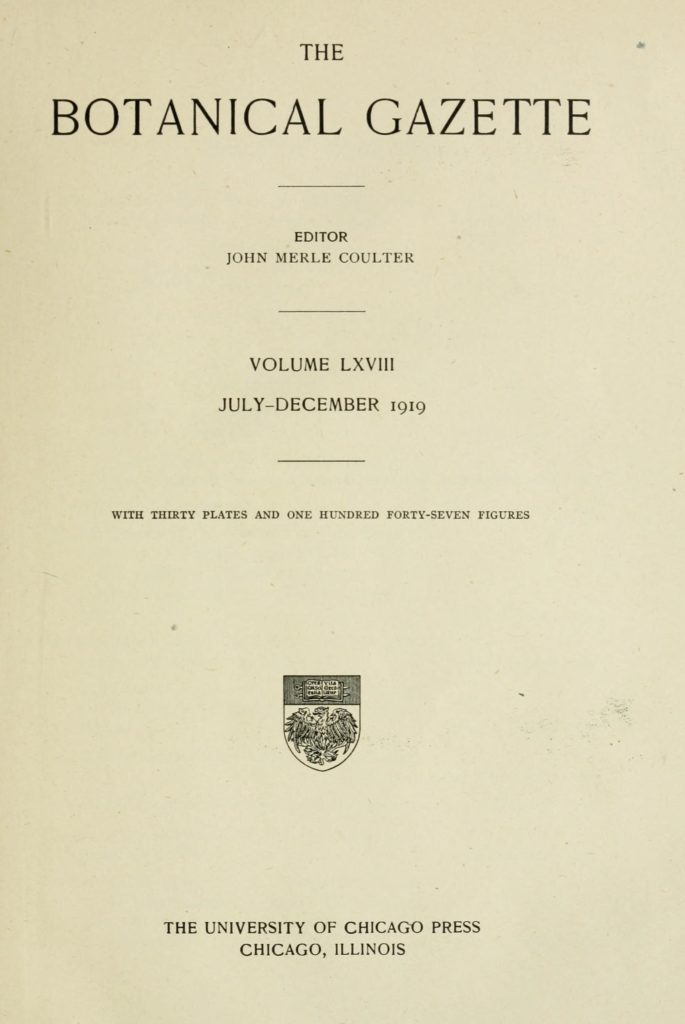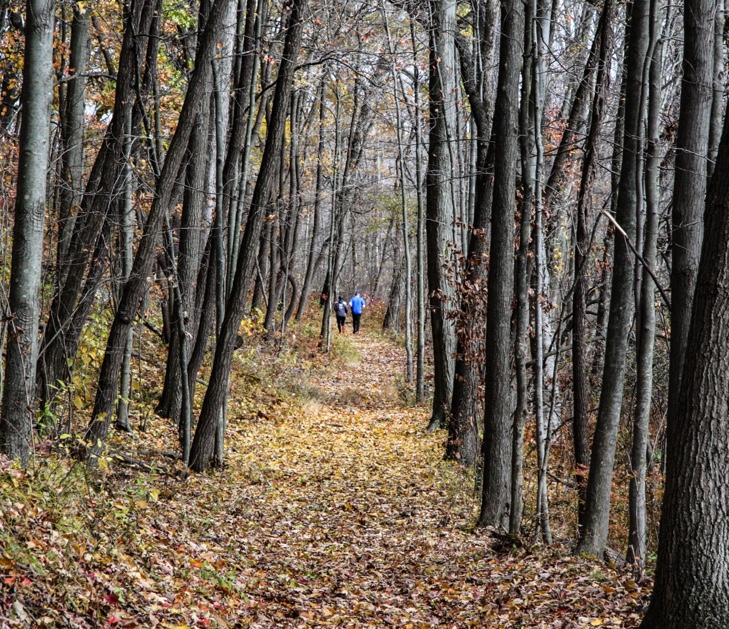Today is a day for botanists. Two famous plant guys were born on November 20. Augusto Weberbauer, born in 1871, was a German botanist who studied the flora of Peru, publishing the first comprehensive catalogue of Peruvian plants. Twenty years Weberbauer’s senior, John Merle Coulter was born on November 20, 1851 (died 1928), and became one of the world’s foremost botanists.

Coulter was actually born in China, where his missionary parents were living. When only two years old, his father died, and so his mother returned to her childhood home of Portage, Indiana, on the shore of Lake Michigan just east of Gary. There Coulter and his brother (who also became a famous botanist), took to the outdoors, studying the fields and woods of the sand-dune ecosystems of the vicinity.
Interested in all fields of natural history, Coulter decided to study geology at Hanover College in the opposite corner of Indiana, on the Ohio River. Life changed for him when his former professor (students, listen up—find an interesting professor and volunteer in her lab) invited him to join a group that was going to explore the west. That group was the now-famous Hayden Expedition, sent west to study the Yellowstone region in 1871; their report told of the “fantastic” ecosystem there and led to the formation of the world’s first national park a year later (learn more about Yellowstone here).
Although he was a geological assistant on the expedition, Coulter became mesmerized by the western flora, so different from that of the Midwest. Hayden discovered his talent and interest—while others spent their evenings playing cards, Coulter worked on his plant collections—and named him the expedition’s official botanist. He co-authored the monograph, Synopsis of the Flora of Colorado, in 1874.

Coulter never looked back, taking up botany as his profession. He completed advanced degrees at Hanover College and took a faculty position there as both a Latin teacher and natural history professor. In 1875, he founded a journal, the Botanical Bulletin, and edited it for fifty years. The journal has been in active publication since Coulter started it, now called the International Journal of Plant Sciences and among the top botanical journals in the world. As Coulter wrote in 1916, “In 1875, …an insignificant-looking botanical journal began to appear each month….This journal is distinctly a Hossier by birth, but its influence has reached wherever the science of botany is cultivated.”
In a similar journey as his journal, Coulter became one of the world’s leading botanists. He published at a breath-taking pace, producing botanical works about Indiana, the Rockies, Texas and other locales, and becoming the global expert on the carrot family (the Umbelliferae), naming dozens of species (he wrote to Asa Gray, “…for a year now I have been eating, drinking and sleeping Umbelliferae”). He took over the editing of Asa Gray’s famous Manual of Botany, producing the sixth edition.
When the famous fisheries scientist, David Starr Jordan, left the presidency of Indiana University (to become president of Stanford), Coulter was named to take Jordan’s place. After just two years, he became president of Lake Forest College in Illinois, presumably a better fit with his strong Presbyterian faith. He then went to the University of Chicago, where he headed the botany department and remained for most of the rest of his career, producing a string of students who became leaders of the next generation of botanical ecologists. Coulter’s personal collection of about 44,000 botanical specimens now resides at the Field Museum in Chicago. His final years were spent at Harvard, where he helped found the now-famous Boyce Thompson Institute, devoted to botanical research in support of agriculture and environmental sustainability.

A most fitting tribute to this pioneering botanist is the John Merle Coulter Nature Preserve in his home town of Portage, Indiana. The 92-acre preserve incorporates a variety of ecosystems, including black oak savannas, prairies, sedge meadows and intertidal sand dunes. The site was mined in the 1930s for sand—and in a happy outcome, the disturbance created niche habitats for rare native plants. The preserve boasts more than 400 plant species, 19 of which are on the Indiana protected list. The preserve abuts the western portion of Indiana Dunes National Park, the nation’s newest national park, created on February 15, 2019.
References:
Coulter, John Merle. 1916. A Century of Botany in Indiana. Proceedings of the Indiana Academy of Sciences, 26:236-260. Available at: https://books.google.com/books?id=86ohAQAAIAAJ&pg=PA48&lpg=PA48&dq=john+coulter+on+indian+dunes&source=bl&ots=qN9Yarc6ef&sig=ACfU3U1nteDpXnFd4nwIaGpxy04PpJRr_g&hl=en&sa=X&ved=2ahUKEwj81Nflwt3lAhXxmq0KHRQyCbcQ6AEwAHoECA0QAQ#v=onepage&q=john%20coulter%20on%20indian%20dunes&f=false. Accessed November 9, 2019.
Heiser, Charles B. Jr. 1985. John Merle Coulter, Botanist. Proceedings of the Indiana Academy of Sciences, 95:367-370. Available at: http://journals.iupui.edu/index.php/ias/article/view/7520/7537. Accessed November 9, 2019.
Shirley Heinze Land Trust. John Merle Coulter Nature Preserve. Available at: http://www.heinzetrust.org/john-merle-coulter.html. Accessed November 79, 2019.
